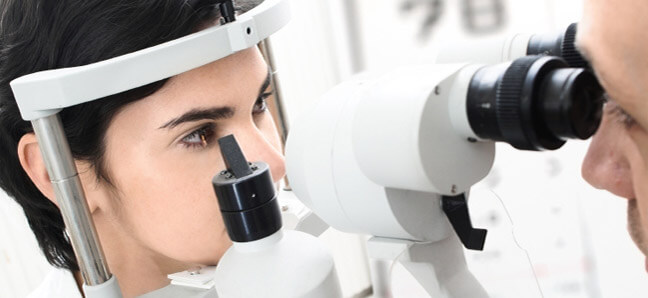Home » Blog » Make Eye Health A Priority
Make Eye Health A Priority
Posted by: South Georgia / North Florida Eye Partners in Blog

May is Healthy Vision Month, and therefore, it’s the perfect time to schedule a comprehensive eye exam to make sure you are seeing your best. Don’t wait until there’s a problem to start paying attention to your eye health.
Many common eye diseases that can lead to vision loss and blindness, such as diabetic eye disease, glaucoma or age-related macular degeneration (AMD), often have no early warning signs or symptoms. And, the risk of vision loss or blindness is higher for some people based on race, ethnicity and other demographic and socioeconomic factors. Therefore, it’s important to be proactive when it comes to your vision.
You might be at higher risk for eye disease if you have a family history of vision problems; have diabetes; are African American, Hispanic/Latino, American Indian or Alaska Native; or are older than 50. Some diseases affect certain populations disproportionately.
- Glaucoma, which affects your side or peripheral vision first, is three times more common in African Americans and is their leading cause of blindness.
- Diabetic retinopathy, a leading cause of blindness caused by uncontrolled diabetes, occurs more often in Hispanics/Latinos.
- American Indians and Alaska Natives are 35 percent more likely to have diabetes than the average adult in the United States, putting them at an increased risk of diabetic eye disease.
- Older adults are at higher risk of developing age-related eye diseases and conditions such as AMD, glaucoma or cataracts. AMD is the leading cause of blindness in Whites.
If you are at a higher risk of eye disease, having a comprehensive dilated eye exam is the best thing you can do to protect your vision. It is a painless procedure where your eye doctor puts drops in the eyes to dilate, or widen, the pupil so he or she can get a good look at the back of the eye to check for signs of eye disease. You can also request an Optomap as part of your eye exam. The Optomap image allows your physician to view 82% of the retina versus traditional methods that only reveal 10-12% of the retina at one time. It is therefore another important tool for the screening and early visualization of eye problems.
In addition to having regular eye exams, eating a healthy diet, not smoking and wearing protective eyewear are just a few other things you can do to protect your vision.
*Source: National Eye Institute
